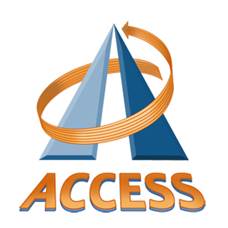

STRATEGIC LEADERSHIP FOR THE 21ST CENTURY
AWARENESS – CHARACTER – COMMUNITY – EMPOWERMENT SERVICE – SUSTAINABILITY
INTRODUCTION
Leadership Today
Leadership is part of our most basic understanding of how people work together to get things done. Leadership is an often discussed topic that never seems to be exhausted. People look for and hope for strong leaders who can guide them to a positive future. Utilities, like most organizations today, need and are looking for good leaders—leaders who can establish a vision and goals, can drive accountability, are effective communicators who empower others, understand how the organizational systems can be leveraged to create important change, and have a deep sense of service to the organization, the utility’s customers, and the community.
Why ACCESS Leadership?
The ACCESS Leadership model grew out of two things—our years of observations of leaders in action, both successful and unsuccessful, and our study of a wide array of writings and studies on leadership ranging from the “Great Man” theories of the past to Servant Leadership articulated by Robert Greenleaf in the 1970s (initially) and Otto Sharmer’s recent Theory U Leadership. While we could find positive elements in each of these models of leadership, we found no single model that balanced what we saw in the strong leaders we had worked with—that is, an ability to envision and inspire the future, live out articulated values, and a deep sense of service with the capability to create a work environment and develop others in a way that stimulated accountability and high achievement. The ACCESS Leadership model and this workshop are built around the idea that,
- Strong leaders ACCESS the strengths within themselves for the benefit of their groups, organizations, community, and society;
- Organizations need ACCESS not only the leader at the top, but to all the many leaders within the organization;
- A good leader builds for the future by being able to ACCESS the inherent leadership capabilities in others; and
- Finally, effective leaders artfully ACCESS the various organizational, political, and community levers (structure, systems, processes, resources, people) to achieve positive results.
To address these four (4) aspects of leadership, we identified a tiered model of six (6) key actions and 18 commitments that together encompass the skills, attitudes, knowledge, and guiding principles we believe mark leaders who positively influence their organizations, the community, and even society. Our course is built around these actions and commitments.
The Strategic Leadership Course
In this 3-day course, we will lay out the actions and commitments of ACCESS Leadership in six (6) half-day modules, each of which focuses on one of the actions defined in the ACCESS model and the three commitments associated with that ACCESS action. Through presentations, learning exercises, reflection, discussion, case studies, skill-practice, and action learning projects, participants will build understanding and capabilities needed to be leaders their utilities. Participants will discover a dual focus throughout this course. The first focus is on the individual’s skills, capabilities, and understanding of themselves as leaders. The second is on the organization—its need for and support of leaders. At the end of the course, participants will have an opportunity to practice their newly honed skills through a post-course project that will address an issue, problem, or opportunity in their own organizations.
Module I: Awareness: Gets Results
- Setting, Guiding, and Fulfilling Goals
- Setting and Tracking Performance Measures
- Effective Decision Making
- Action Learning Case
Module II: Character: Drives Core Values
- The Role of Values and Values Assessment
- Maintaining an Ethical Stance
- Self-assessment and Self-reflection
Module III: Community: Builds Connections
- Linking Organization Purpose to Customer/Community Needs
- Overcoming Differences to Find Common Ground
- Keys to Effective Communication and Tools to Facilitate
Module IV: Empowerment: Strengthens the Organization
- Assessing and Developing the Capabilities of Others
- Action Learning Case: Assessing and Developing the Capabilities of Others
- Appropriately Sharing Power and Authority
- Building and Managing Effective Teams
Module V: Service: Fulfills Purpose & Mission
- Understanding the Varied Needs of the Utility’s Constituencies
- Creating a Shared Vision
- Stimulating Innovation
Module VI: Sustainability: Sees the Big Picture
- Gaining and Working Within a Systems Perspective
- Balancing Short and Long Term Horizons
- Guiding Needed Change
- Action Learning: Implementing Change






